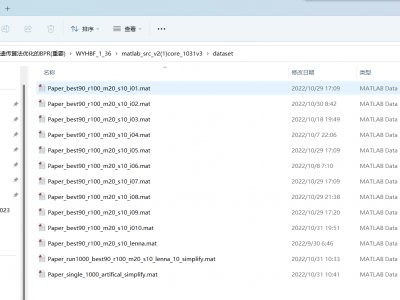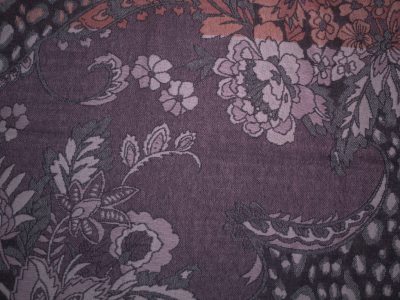Image Processing

We generated an IV fluid-specific dataset to maximize the accuracy of the measurement. We developed our system as a smartphone application, utilizing the internal camera for the nurses or patients. Thus, users should be able to capture the surface of the fluid in the container by adjusting the smartphone's position or angle to reveal the front view of the container. Thus, we collected the front view of the IV fluid containers when generating the training dataset.
- Categories:
 19 Views
19 Views
Lettuce Farm SLAM Dataset (LFSD) is a VSLAM dataset based on RGB and depth images captured by VegeBot robot in a lettuce farm. The dataset consists of RGB and depth images, IMU, and RTK-GPS sensor data. Detection and tracking of lettuce plants on images are annotated with the standard Multiple Object Tracking (MOT) format. It aims to accelerate the development of algorithms for localization and mapping in the agricultural field, and crop detection and tracking.
- Categories:
 700 Views
700 ViewsThe demand for artificial intelligence (AI) in healthcare is rapidly increasing. However, significant challenges arise from data scarcity and privacy concerns, particularly in medical imaging. While existing generative models have achieved success in image synthesis and image-to-image translation tasks, there remains a gap in the generation of 3D semantic medical images. To address this gap, we introduce Med-DDPM, a diffusion model specifically designed for semantic 3D medical image synthesis, effectively tackling data scarcity and privacy issues.
- Categories:
 2886 Views
2886 ViewsIn agriculture, the development of early treatment techniques for plant leaf diseases can be significantly enhanced by employing precise and rapid automatic detection methods. Within this realm of research, two common scenarios encountered in real field cases are the identification of different severity stages of diseases and the detection of multiple pathogens simultaneously affecting a single plant leaf. One major challenge faced in this area is the lack of publicly available datasets that contain images captured under these specific conditions.
- Categories:
 479 Views
479 ViewsThis dataset consists of a test result dataset with 10 sample images and a test result dataset with a artificial image. Backpropagation neural networks (BPNNs) can be used to restore images; however, the error surface of the BPNN algorithm contains several extrema, making it easy to slip into a locally optimal solution. A genetic algorithm (GA) with a strong global searchability can optimize the initial weight and threshold of BPNNs. However, traditional GAs are prone to local convergence and stagnation; hence, we propose a hybrid GA.
- Categories:
 286 Views
286 ViewsThis dataset contains 37 estrogen receptor immunohistochemistry (ER-IHC) whole slide images (WSIs) obtained from Universiti Malaya Medical Centre (UMMC), Malaysia. The WSI is scanned using 3DHistech Pannoramic DESK at 20x magnification with an approximate dimension of 80,000 pixels width and 200,000 pixels height per WSI.
- Categories:
 1220 Views
1220 ViewsRealistic benchmark datasets are crucial for providing a consistent measurement baseline for comparing different BlindSR methods and testing their generalization ability in real-world scenarios. However, the evaluation of BlindSR methods is still limited by the lack of a common dataset that conforms to realistic degradation scenarios. We construct a benchmark dataset that follows real scenarios, which reflects the real-world BlindSR problem more accurately than existing synthetic datasets.
- Categories:
 117 Views
117 Views
A novel method is proposed in the paper to obtain the high-precision estimation of the angular velocity and the star-spot’s centroid at the same time. First, the Radon transform on a single frame image is adopted to roughly estimate the initial value of angular velocity and the star-spot’s centroid based on the dynamic imaging and kinematic model. Then, theloss function of each star spot is constructed by combining two consecutive frames.
- Categories:
 44 Views
44 Views
The morphological characteristics of skeletal muscles, such as fascicle orientation, fascicle length, and muscle thickness, contain valuable mechanical information that aids in understanding muscle contractility and excitation due to commands from the central nervous system. Ultrasound (US) imaging, a non-invasive measurement technique, has been employed in clinical research to provide visualized images that capture morphological characteristics. However, accurately and efficiently detecting the fascicle in US images is challenging.
- Categories:
 214 Views
214 Views
This simulation dataset contains five types of data: resolutions, vessels, vessel stenosis, tumors, and shape combinations. There are a total of 1000 original binary images. Besides, we set different gray values on images with multiple connected domains to simulate different concentration of magnetic nanoparticles. Next, the images are subjected to operations such as image inversion and image rotation. The final dataset contains 20,000 images. we applied the X-space method based on the X-space theory and we generated the simulated image of magnetic particle imaging.
- Categories:
 338 Views
338 Views



